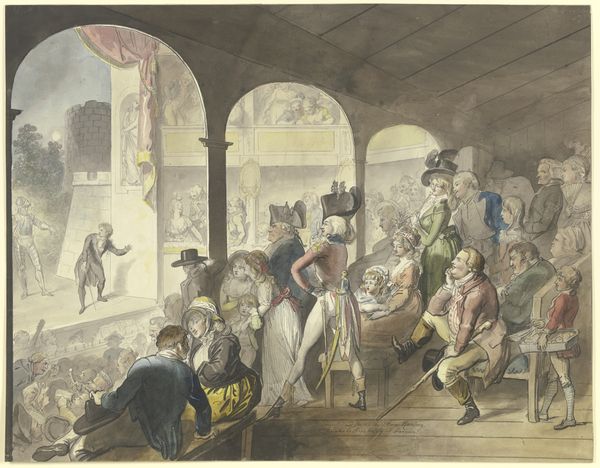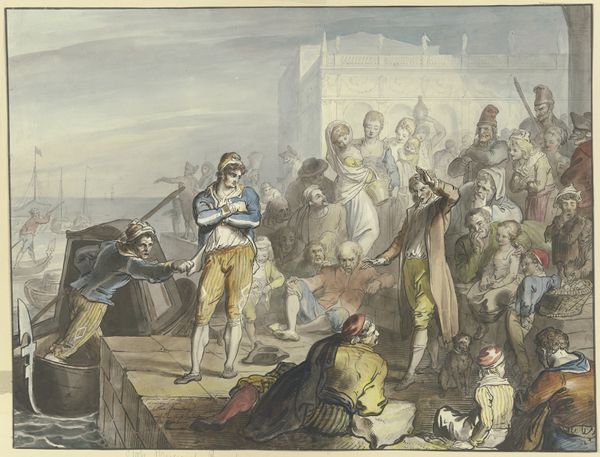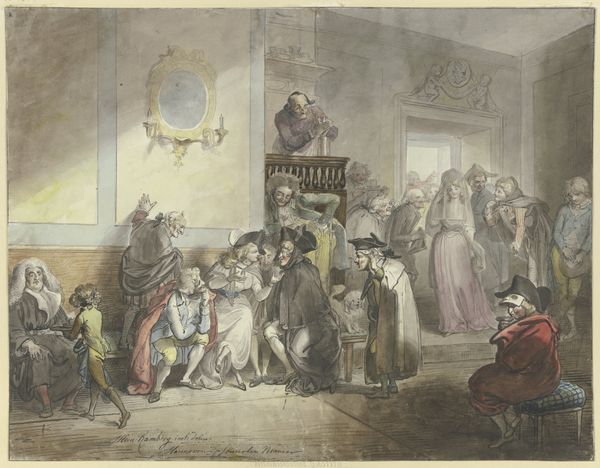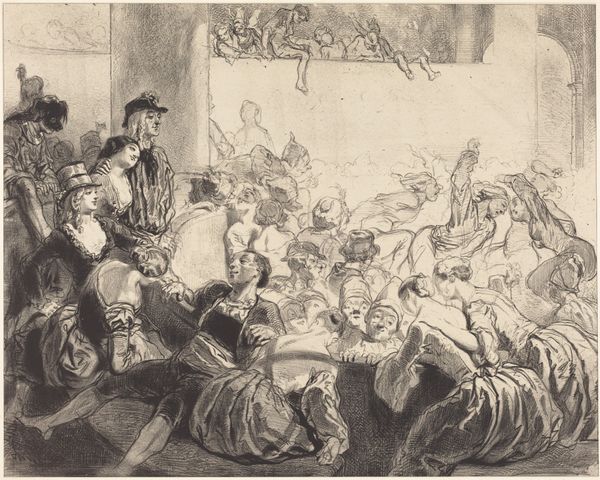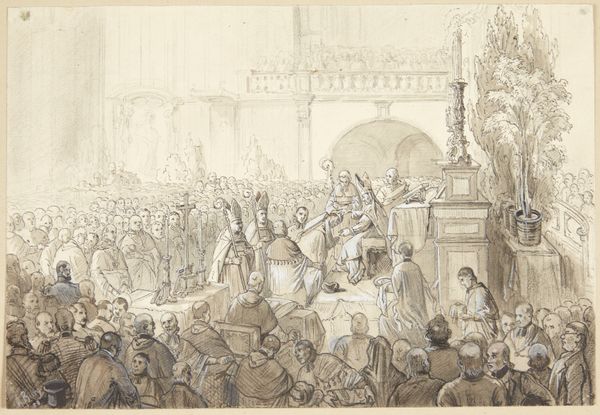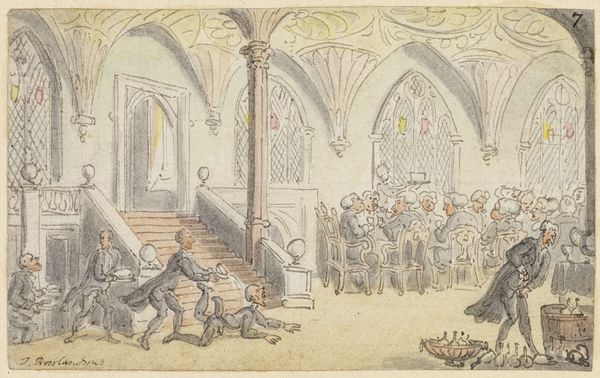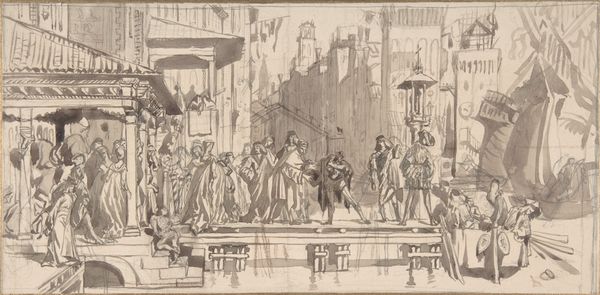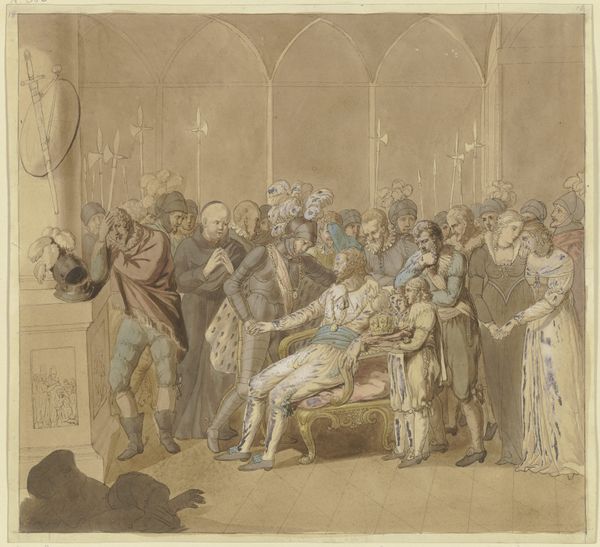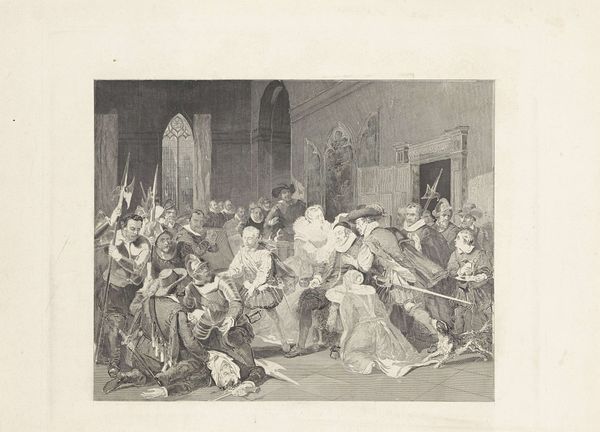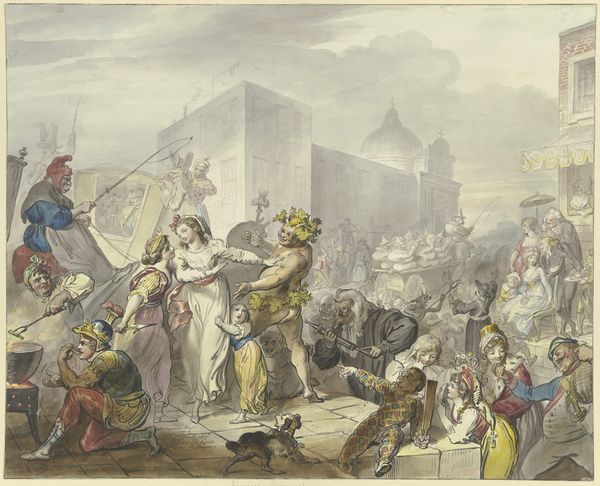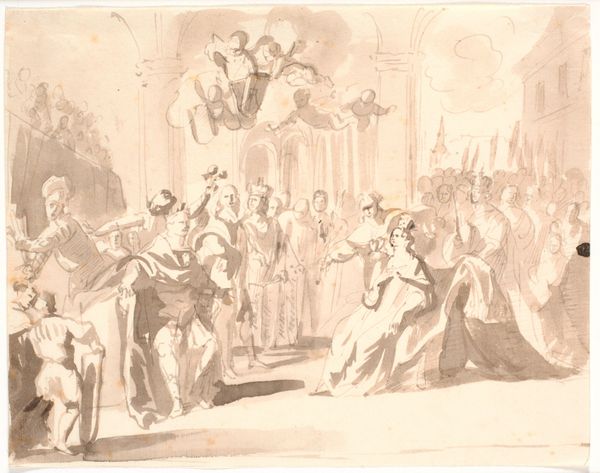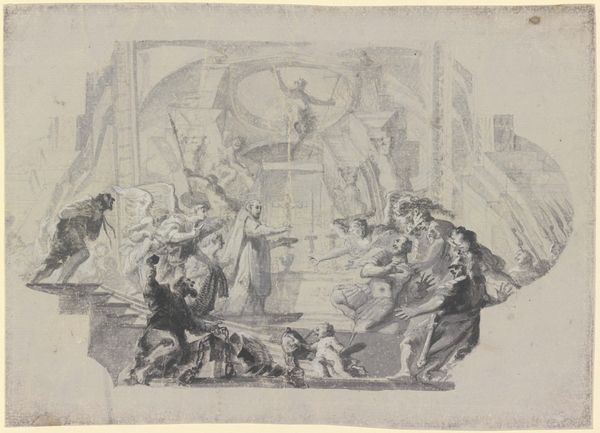
Theaterpublikum bei der Vorstellung eines Ballettstückes 1797
0:00
0:00
drawing, painting, paper, watercolor, ink
#
portrait
#
drawing
#
narrative-art
#
painting
#
landscape
#
figuration
#
paper
#
form
#
watercolor
#
ink
#
classicism
#
line
#
genre-painting
#
history-painting
Copyright: Public Domain
Curator: Looking at this piece, I’m struck by the vibrant yet almost ghostly feel, a result of Ramberg’s use of watercolor and ink on paper. It gives the whole scene an ethereal quality. Editor: Indeed. Let’s delve into the historical context. This artwork, "Theaterpublikum bei der Vorstellung eines Ballettstückes" from 1797, currently residing in the Städel Museum, presents us with a window into late 18th-century entertainment and social life. We can clearly observe class distinctions in the seating arrangements. Curator: Absolutely. And focusing on the material conditions of the production, one must consider paper as a substrate. What sort was available? Who had access to high-quality drawing paper like this? Ramberg’s skill elevates commonplace materials, transcending its base nature through skillful application of watercolor. The crosshatching, for instance, used to render depth and shadow suggests a deep understanding of printmaking techniques which Ramberg was known to produce as well. Editor: Precisely! The availability of theatre—specifically ballet—and its accessibility also tell a great deal. Was ballet viewed as high culture, or something more democratic? Moreover, look at the gaze. The painting directs *our* gaze, the painting's audience, at *their* gaze, the theatre's audience, in order to implicate all. Curator: Consider, too, the implied labor of all these artistic production levels. The dancers’ physical work, the musician down to the left of them…even Ramberg’s labor in documenting the audience’s consumption, immortalizing them watching a work being performed. Editor: Very insightful. It serves as a visual document reflecting contemporary socio-political hierarchies. The elite in their finery are juxtaposed with those occupying less prominent positions—observing, critiquing. Who were they? What power did they have over popular imagery, how it shaped thought? Curator: It's fascinating how the labor is recorded, filtered and viewed differently, isn’t it? From the skilled artist manipulating pigments to the performers engaging physically, it's all work…yet understood through a hierarchy. Editor: Ultimately, Ramberg delivers a poignant observation regarding spectatorship—both of performance, and social structure—a relevant message transcending time, now resting in the halls of the Städel. Curator: Precisely. By considering the interplay between the artist, the materials used, and their broader societal position, our appreciation transcends the surface image and engages with something more vital.
Comments
No comments
Be the first to comment and join the conversation on the ultimate creative platform.
